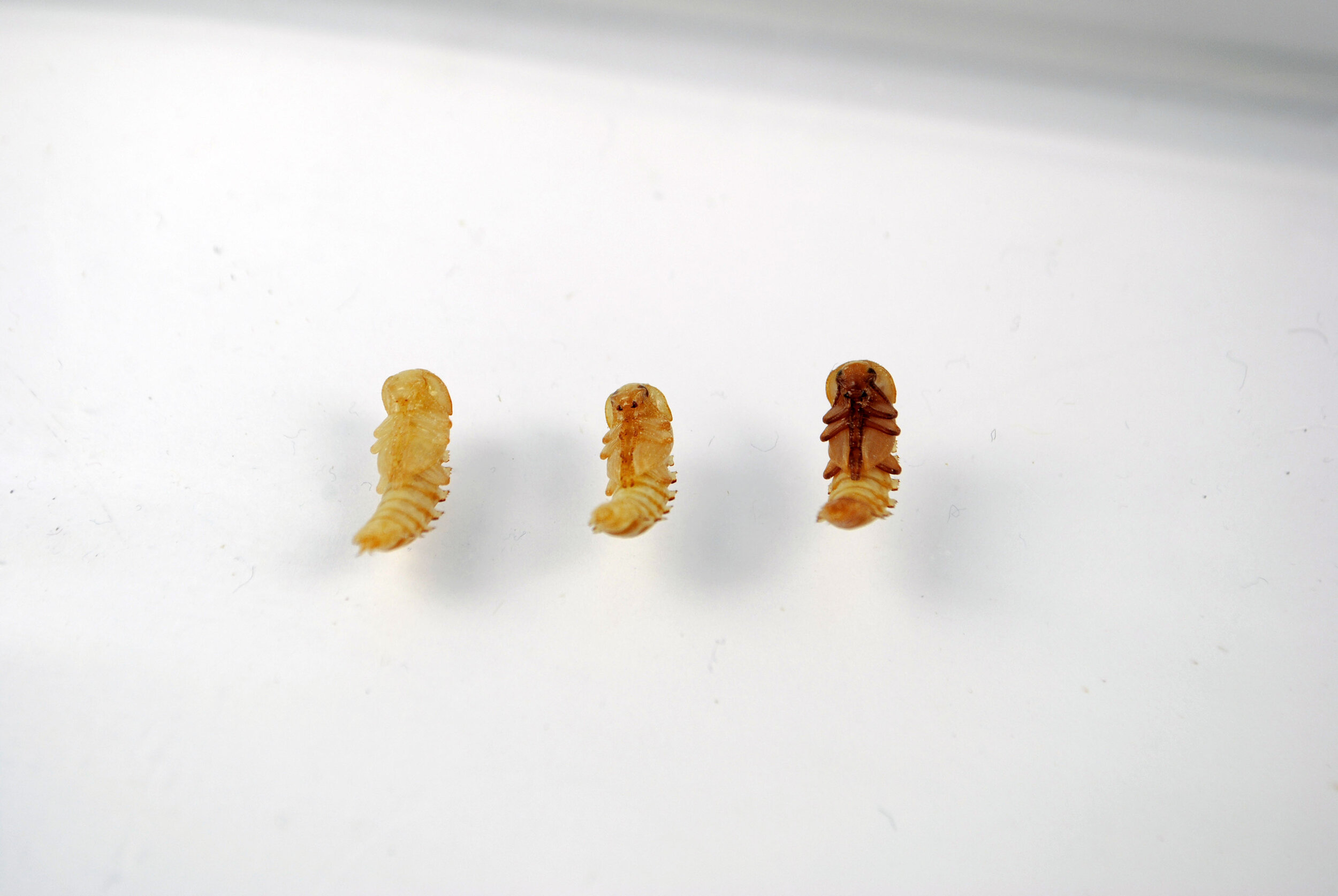Preparing Set Up
After continuing my research, the temperature of the room will greatly affect the amount of days in the larval development stage. The larval stage for waxworms, mealworms, and black soldier fly larvae is around 18-60 days. Based on the cooler temperature and dampness of back water-closet room of the Nature Lab, I predict the larval stage will be slowed dramatically as opposed to a recommended 70-80 degree environment to encourage faster metabolic rates therefore more rapid growth in the larva. Instead of conducting my experiment for two months, I predict I'll conduct multiple shorter experiments with the same and new populations of insects.
I bought 1,000 waxworms from Bassett's Cricket Ranch and 1,000 mealworms from Predator Foods on Amazon. I also returned the 9 large bins from Ikea and bought smaller bins from Costco which is better to conduct more test experiments. Initially I planned on having one larger experiment, more mealworms/waxworms in the same bin eating the same plastic. After reading the Stanford study more and other experiments with insects, a population of 3-15 was often used. I have plenty of worms coming my way...
I have reached out to numerous recycling facilities for tour and interviews about the waste stream. I have an appointment with The Providence Office of Sustainability on March 9th and a tour of Resource Recovery on April 3rd.
I am also working my way through a heap of books. The titles I'm currently reading are listed below:
978-1-935202-22-6: Sustainism is the New Modernism- Michiel Schwarz, Joost Eiffers
978-0-8166-9888-2: Designing Our Way to a Better World- Thomas Fisher
978-1-4739-1886-3: Economies of Design- Guy Julier
978-0-415-53766-7: Design Education for a Sustainable Future- Rob Fleming
978-1-5063-3048-8: Interdisciplinary Research (3rd Edition)- Allen F. Repko, Rick Szostak
978-1-138-80451-7: Plastics Now- Billie Faircloth
0-8050-3751-9: An Inordinate Fondness for Beetles- Arthur V. Evans, Charles L. Bellamy
978-1-61689-166-4: Permanent Change: Plastics in Architecture and Engineering- Michael Bell, Craig Buckley
978-3-0346-0368-3: Creating Desired Futures: How Design Thinking Innovates Business- Michael Shamiyeh
978-2-918063-17-9: Design For Change- Black Jack Editions
978-0-262-51692-1: Dirt (Vol. 2)- Born, Furján, Jencks, Crosby
978-2-940496-04-4: Sustainable Thinking: Ethical approaches to design and design management- Aaris Sherin
978-1-85669-585-51000: New Ecodesigns and Where To Find Them- Rebecca Proctor
978-0-12-374144-8: Encyclopedia of Insects (2nd edition)- Ring T. Cardé
978-1-118-84615-5: The Insects: An Outline of Entomology (5th edition)- P.J. Gullan, P.S. Cranston
0-929634-08-X: The Recycler's Handbook- The Earthworks Group
...and this list will continue to be updated! I'm open to suggestions if anyone has some to share!
I'll leave you with some new bug knowledge:
“Carrion and skin beetles, which consume dead animal tissue, skin, feathers, fur, and hooves, include members of the silphids, clerids, dermestids, and trogids. Because of their ability to remove tissue from bone, dermestids are used by nearly every natural history museum around the world to clean animal skeletons for use in research collections and exhibits. (116)”

